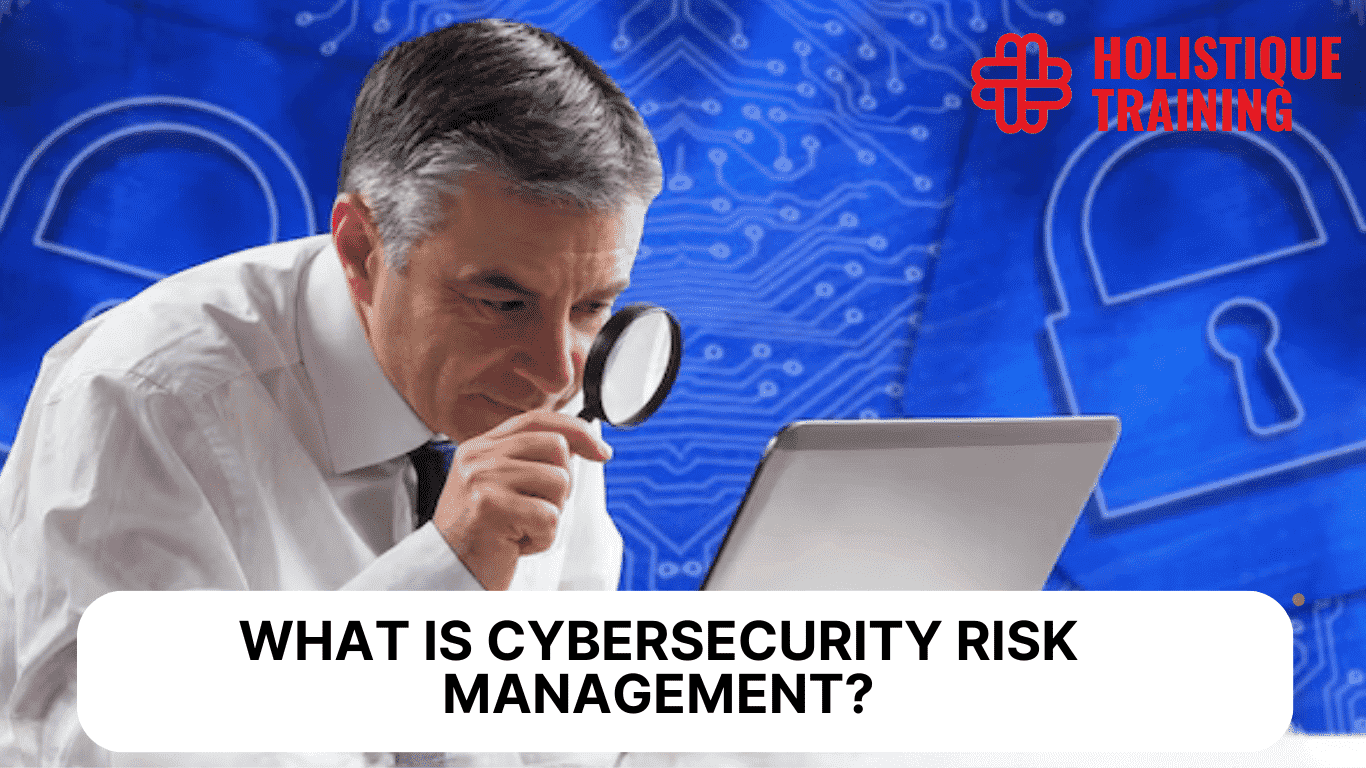In the digital era, where technology has permeated every aspect of our lives, the importance of cybersecurity cannot be overstated. With the rapid advancement of technology, the threat landscape has become more complex, putting businesses and individuals at risk of cyber-attacks and data breaches. In this blog post, we will explore various cybersecurity techniques to manage risk in the information age, ensuring that you understand how to safeguard your digital assets and data effectively.
How to Know If Your Cybersecurity Is at Risk
Recognising that your cybersecurity is at risk is the first step towards implementing effective risk management strategies. Here are some common signs that your cybersecurity might be compromised:
Unusual Network Activity
Monitor your network for any unusual or unauthorised activities, such as unexplained data transfers or attempts to access sensitive information.
Suspicious Emails
Phishing emails remain one of the most common attack vectors. Be vigilant about identifying suspicious emails and never click on unknown links or provide sensitive information.
Outdated Software and Systems
Failure to update software and operating systems can leave vulnerabilities unpatched, making your system an easy target for cybercriminals.
Weak Passwords
Weak or reused passwords are a significant risk. Implement strong password policies and consider using multi-factor authentication for added security.
Lack of Employee Awareness
Human error is a significant factor in cyber incidents. Ensure your employees are trained in cybersecurity best practices to reduce the risk of accidental breaches.
What Is Cybersecurity Risk Management?
Cybersecurity risk management is a comprehensive and dynamic process that involves identifying, assessing, and mitigating the risks associated with potential cyber threats and vulnerabilities. It aims to protect an organisation's digital assets, sensitive data, and information systems from unauthorised access, disruption, or destruction.
The main objectives of cybersecurity risk management are to:
Identify Assets
The first step in the risk management process is to identify and categorise the organisation's digital assets. This includes hardware, software, data, intellectual property, network infrastructure, and cloud services. Understanding what needs protection is crucial to formulating an effective risk management strategy.
Assess Vulnerabilities
Once assets are identified, organisations must conduct regular risk assessments to identify potential weaknesses and vulnerabilities in their systems and networks. Vulnerabilities can arise from unpatched software, misconfigurations, weak passwords, or human errors.
Evaluate Threats
Understanding the evolving threat landscape is vital in cybersecurity risk management. Organisations need to analyse and evaluate potential threats they may encounter, such as malware, phishing attacks, ransomware, insider threats, and distributed denial of service (DDoS) attacks.
Analyse Impact and Likelihood
Risk management involves evaluating the potential impact of a cyber incident and the likelihood of it occurring. This analysis helps prioritise risks based on their severity and enables organisations to allocate resources effectively.
Implement Controls
Based on the risk assessment, organisations must deploy appropriate security controls and measures to protect against identified threats and vulnerabilities. These controls may include firewalls, intrusion detection systems, antivirus software, encryption, multi-factor authentication, and employee training programmes.
Incident Response Planning
Developing a comprehensive incident response plan is essential in cybersecurity risk management. An incident response plan outlines the steps to be taken in the event of a cyber incident. It includes procedures for containing the threat, mitigating damage, investigating the incident, and recovering systems and data.
Continuous Monitoring and Review
Cybersecurity risk management is an ongoing process. Continuous monitoring of systems and networks is crucial to detect any new vulnerabilities or potential threats. Regular reviews and updates to risk management strategies help organisations adapt to new cyber threats and changes in their IT infrastructure.
Integration with Business Objectives
Effective cybersecurity risk management is not solely an IT concern. It should be closely aligned with the organisation's business objectives and overall risk management strategy. A well-integrated approach involves the following:
Board-level Involvement
Cybersecurity risk management should be a priority for the board of directors and senior management. They play a vital role in setting the tone and culture of cybersecurity within the organisation.
Risk Appetite
Organisations must define their risk appetite, indicating the level of risk they are willing to accept to achieve their business goals. This guides decisions on risk tolerance and resource allocation for cybersecurity measures.
Business Impact Analysis
Understanding the potential impact of cyber incidents on the organisation's operations, reputation, and finances helps prioritise cybersecurity efforts.
Cybersecurity Awareness Training
Employees should be educated on the importance of cybersecurity and their role in mitigating risks. Creating a security-conscious culture is vital in preventing security breaches caused by human error.
Main Processes in Cybersecurity Risk Management
To effectively manage cybersecurity risks, several key processes need to be incorporated into your risk management strategy:
1- Risk Identification
Start by identifying potential risks and threats that could impact your organisation. This involves understanding your assets, assessing their value, and recognising potential vulnerabilities.
2- Risk Assessment
Evaluate the probability of threats exploiting vulnerabilities and the potential impact on your organisation. This step helps prioritise risks and allocate resources efficiently.
3- Risk Mitigation
Implement security controls and measures to reduce the likelihood and impact of identified risks. This may include patching software vulnerabilities, implementing access controls, and enhancing employee training.
4- Incident Response Planning
Develop a comprehensive incident response plan to handle cyber incidents effectively. A well-defined plan can minimise damage, reduce downtime, and aid in swift recovery.
5- Continuous Monitoring
Regularly monitor your systems and networks for signs of potential breaches or unauthorised activities. Real-time monitoring helps detect and respond to threats promptly.
Table 1: Metrics to measure the effectiveness of cybersecurity risk management
Metric | Description | Measurement Method |
Incident Response Time | Swift reaction to cyber incidents. | Time taken from detection to resolution. |
Employee Training Compliance | Adherence to cybersecurity best practices. | Percentage of employees completing training annually. |
Vulnerability Patching Rate | Timely closure of identified system vulnerabilities. | Percentage of vulnerabilities patched within specified time. |
Phishing Resilience Index | Employee resistance to phishing attempts. | Rate of successfully avoided phishing simulations. |
Regulatory Compliance Score | Adherence to cybersecurity regulations and standards. | Evaluation of compliance with relevant laws and standards. |
Challenges of Cybersecurity Risk Management
While the importance of cybersecurity risk management cannot be overstated, it's essential to recognise the challenges that organisations face in implementing effective strategies. The dynamic nature of the digital landscape brings forth several obstacles that demand continuous attention and adaptation. Here are some key challenges in the realm of cybersecurity risk management:
1. Rapid Evolution of Threats
The cybersecurity landscape is in a constant state of evolution. Cyber threats, including new types of malware, sophisticated phishing techniques, and zero-day vulnerabilities, emerge regularly. Staying ahead of these threats requires organisations to invest in ongoing research and development of security measures.
2. Skill Shortages
The demand for skilled cybersecurity professionals often surpasses the available talent pool. Organisations struggle to recruit and retain experts capable of understanding and mitigating the latest cyber threats. This skill shortage can impede the implementation of effective risk management strategies.
3. Integration with Business Processes
Aligning cybersecurity risk management with broader business objectives can be challenging. Finding the right balance between security measures and operational efficiency is crucial. It requires collaboration between IT and business units to ensure that security practices support, rather than hinder, overall organisational goals.
4. Complexity of IT Infrastructure
Modern organisations often have complex IT infrastructures that include a mix of on-premises systems, cloud services, and interconnected devices. Managing the security of this diverse ecosystem poses challenges, as each component may have unique vulnerabilities that need to be addressed.
5. User Awareness and Training
Despite advancements in technology, human error remains a significant factor in cybersecurity incidents. Ensuring that employees are well-informed about cybersecurity best practices and are actively engaged in maintaining a security-conscious culture is an ongoing challenge for organisations.
6. Balancing Accessibility and Security
Organisations strive to provide seamless access to digital resources while maintaining robust security measures. Achieving the right balance between accessibility and security is a delicate task, requiring careful consideration of user experience and potential vulnerabilities.
7. Regulatory Compliance
Navigating the complex landscape of cybersecurity regulations and compliance standards is an ongoing challenge. Organisations must stay abreast of legal requirements, industry-specific standards, and evolving data protection laws to avoid regulatory pitfalls.
8. Third-Party Risks
As organisations increasingly rely on third-party vendors and service providers, managing the cybersecurity risks associated with these external entities becomes crucial. Ensuring that third parties adhere to robust security practices is essential for the overall security posture of an organisation.
In addressing these challenges, organisations can enhance their cybersecurity risk management programs, fostering resilience in the face of evolving threats. Continuous education, strategic planning, and a proactive approach to risk mitigation are essential components of a successful cybersecurity strategy. Remember, the landscape may evolve, but a well-prepared and adaptive cybersecurity program remains a stalwart defence against digital threats.
Cyber Risk and The Law
As cyber threats continue to evolve in sophistication and scale, governments worldwide are taking significant steps to address cybersecurity risks and protect their citizens and businesses from cyber-attacks. In the United Kingdom, a robust legal framework has been established to regulate cybersecurity practices and promote a secure digital environment. In this section, we will explore the key aspects of cyber risk and the law in the UK and how it impacts individuals and organisations.
Data Protection and Privacy Laws
In the UK, data protection and privacy laws play a vital role in cybersecurity risk management. The most significant piece of legislation in this domain is the Data Protection Act 2018 (DPA 2018), which supplements the General Data Protection Regulation (GDPR) within the UK. Together, these laws govern the collection, processing, and handling of personal data and provide individuals with enhanced privacy rights.
Under the DPA 2018 and GDPR, organisations are required to:
Obtain Consent: Organisations must obtain explicit consent from individuals before collecting and processing their personal data. Consent should be specific, informed, and freely given.
Implement Security Measures: Organisations are obligated to implement appropriate security measures to protect personal data from unauthorised access, disclosure, and destruction.
Appoint Data Protection Officers: Some organisations are required to appoint a Data Protection Officer (DPO) to oversee data protection compliance and act as a point of contact for data subjects and regulatory authorities.
Notify Data Breaches: In the event of a data breach that poses a risk to individuals' rights and freedoms, organisations must report it to the Information Commissioner's Office (ICO) within 72 hours of becoming aware of the breach.
Cybersecurity Compliance in Regulated Industries
Certain industries in the UK, such as finance and healthcare, are subject to specific cybersecurity compliance standards. For example:
Financial Services: The Financial Conduct Authority (FCA) regulates the financial services sector and places great emphasis on cybersecurity. FCA-regulated firms are required to implement robust cybersecurity measures and regularly test their resilience to cyber threats.
Healthcare: The healthcare sector handles sensitive patient data, making it a prime target for cybercriminals. The National Health Service (NHS) and other healthcare organisations are required to adhere to the NHS Data Security and Protection Toolkit to safeguard patient information.
Incident Notification Requirements
In the UK, incident notification is a critical aspect of cybersecurity risk management. Organisations experiencing certain types of data breaches or cyber incidents must report them to the ICO. The Cyber Security Breaches Survey, conducted by the Department for Digital, Culture, Media & Sport (DCMS), also reveals the prevalence of cyber incidents across different sectors, encouraging organisations to be more vigilant in their cybersecurity practices.
Cyber Liability Insurance
As the threat landscape expands, organisations are turning to cyber liability insurance to protect themselves financially in the event of a cyber incident. Cyber insurance policies can provide coverage for financial losses resulting from data breaches, business interruptions, and legal liabilities arising from cyber events.
Cybersecurity in the AI Era
The rapid advancement of artificial intelligence (AI) has transformed the cybersecurity landscape, presenting both opportunities and challenges. AI-powered cybersecurity solutions have become essential for organisations to defend against sophisticated cyber threats in real-time. In this section, we will delve deeper into the impact of AI on cybersecurity and explore the benefits and potential risks it brings.
Advanced Threat Detection and Analysis
AI's ability to analyse vast amounts of data in real-time has revolutionised threat detection and analysis. Traditional signature-based methods are often limited in detecting new and unknown threats. However, AI-powered cybersecurity systems employ machine learning algorithms to identify patterns and anomalies indicative of cyber threats, even those never encountered before. This enables organisations to proactively defend against emerging threats and respond swiftly to potential breaches.
Real-time Response and Automated Remediation
One of the most significant advantages of AI in cybersecurity is its capacity for real-time response and automated remediation. When AI systems detect malicious activities, they can autonomously respond, taking necessary actions to mitigate the impact of cyber incidents. For example, an AI-driven security system can automatically block suspicious IP addresses, isolate compromised devices from the network, or trigger incident response protocols. This real-time response capability significantly reduces the time and effort required to contain and neutralise threats.
Predictive Analytics and Proactive Measures
AI-driven cybersecurity goes beyond just detecting and responding to threats; it also empowers organisations to adopt a proactive security stance. AI systems analyse historical data and ongoing trends to predict potential cyber risks. This predictive analytics enables organisations to anticipate threats and vulnerabilities, allowing them to take preventive measures before attacks occur. By identifying weak points and recommending security enhancements, AI helps fortify an organisation's cybersecurity defences, making it more resilient to future threats.
Automated Vulnerability Assessment
Continuous monitoring and assessment of an organisation's systems and networks are essential to identifying and patching vulnerabilities promptly. AI-driven tools excel in automating vulnerability assessments, scanning the entire infrastructure at regular intervals. These assessments provide real-time insights into potential weak spots that need immediate attention, reducing the window of opportunity for cybercriminals to exploit vulnerabilities.
Challenges and Ethical Considerations
While AI offers significant advantages in cybersecurity, it also brings unique challenges and ethical considerations:
Adversarial Attacks: AI itself can be vulnerable to adversarial attacks, where malicious actors manipulate AI algorithms to produce incorrect results, potentially leading to false negatives or positives in threat detection.
AI Bias: The data used to train AI models can carry biases that may affect decision-making in cybersecurity. Ensuring fairness and non-discrimination in AI-based security measures is crucial.
Insider Threats: AI can be used to detect external threats effectively, but it may not always identify insider threats, which are equally concerning. Organisations must find ways to balance AI's capabilities to address internal risks adequately.
Limited Explainability: Some AI models, particularly deep learning algorithms, lack transparency and are challenging to interpret. This "black-box" nature can raise concerns about the decision-making process and accountability.
Conclusion
In the information age, managing cybersecurity risk is a critical aspect of protecting our digital assets and sensitive data. By understanding the signs of potential risks, implementing a robust cybersecurity risk management programme, staying compliant with relevant laws, and embracing AI-powered solutions, individuals and organisations can proactively defend against cyber threats. Remember, cybersecurity is an ongoing process that requires constant vigilance and adaptation to safeguard our digital future.
To equip yourself with comprehensive knowledge and practical skills in this critical area, consider enrolling in our course ‘Cyber Security, Legal Risk Management & Governance Strategies’ for expert guidance and hands-on training. Stay informed, stay secure! Contact us now for more information.
Frequently Asked Questions(FAQ)
Why is cybersecurity risk management essential for organisations?
Cybersecurity risk management is crucial as it acts as a proactive shield against ever-evolving cyber threats. By regularly assessing and addressing potential risks, organisations not only safeguard their digital assets but also bolster their resilience to emerging threats, creating a robust defence mechanism against cyber adversaries. This approach not only protects sensitive data but also contributes to the overall stability of the organisation in the face of an increasingly complex and dynamic digital landscape.
How does AI impact cybersecurity risk management?
AI's impact on cybersecurity risk management extends beyond traditional methods by providing organisations with intelligent tools for proactive defence. With AI-driven threat detection and real-time response capabilities, organisations can stay one step ahead of cybercriminals, leveraging predictive analytics to anticipate potential risks. Automated vulnerability assessments powered by AI streamline the identification and remediation process, allowing for a more efficient and adaptive cybersecurity strategy that keeps pace with the rapidly evolving threat landscape.
What role does UK law play in cybersecurity risk management?
UK laws, such as the Data Protection Act 2018, play a pivotal role in shaping and enforcing cybersecurity practices. These regulations not only mandate organisations to handle data responsibly but also require them to promptly report incidents. Additionally, industry-specific regulations ensure that organisations adhere to sector-specific cybersecurity standards, creating a legal framework that fosters a culture of compliance and accountability in safeguarding sensitive information and upholding privacy rights.
How can organisations align cybersecurity risk management with their business objectives?
Organisations can align cybersecurity risk management with their business objectives by actively involving senior management in decision-making processes. Defining a clear risk appetite ensures that cybersecurity efforts are in harmony with the organisation's broader goals, while conducting thorough business impact analysis helps prioritise and allocate resources effectively. Cybersecurity awareness training further ensures that employees understand the critical role they play in maintaining the organisation's security posture, fostering a holistic approach that integrates cybersecurity seamlessly into the overall risk management strategy.
Why is continuous monitoring and review crucial in cybersecurity risk management?
Continuous monitoring and review are vital components of cybersecurity risk management as they provide a dynamic response to the ever-changing threat landscape. By staying vigilant and adapting security measures in real-time, organisations can swiftly identify and mitigate emerging vulnerabilities. Regular reviews not only ensure that cybersecurity measures remain effective but also facilitate ongoing improvements, helping organisations stay resilient in the face of evolving cyber threats and maintaining a proactive stance against potential risks.





















